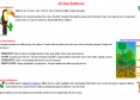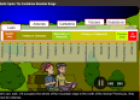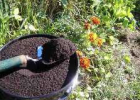Cargando...
Recursos educativos
-
Nivel educativo
-
Competencias
-
Tipología
-
Idioma
-
Tipo de medio
-
Tipo de actividad
-
Destinatarios
-
Tipo de audiencia
-
Creador
-

Final Autoevaluation 6.04 - The natural environment. Ecosystems
EduBook Organización
- 2600 visitas
Answer true or false: Soil type does not determine the type of vegetation that occurs. Poorly developed soils have very thin horizons. Plants grow best in soils with very thick horizons. The roots of…
-

Interpret. A table
EduBook Organización
- 1765 visitas
In order to analyse the amount of humus in the soil, we react a sample of it with hydrogen peroxide. The carbon in the organic material reacts with this compound and as a result, the reaction gives off…
-

True/false. What plants need
EduBook Organización
- 4413 visitas
Answer true or false: Absorption takes place through the root hairs. Water and mineral salts from the soil pass through the leaves to the conducting vessels. The conducting vessels are called xylem.…
-

All about rainforests
Tiching explorer Organización
- 3523 visitas
In this resource we learn about rainforests. We study animals that live in rainforests and characteristics of rainforests (temperature, soil, etc). The resource includes related classroom activities…
-

The Cantabrian coast
Proyecto Agrega Organización
- 3 lo usan
- 2168 visitas
Lesson designed to help us learn about the main characteristics of the Atlantic ecosystems. We learn about the processes of soil formation. We practice using geography vocabulary correctly. We read maps…
-

Synthetic vs Organic Fertilisers
V&V Books Vicens Vives Organización
- 1 lo usan
- 1305 visitas
Chemical fertilisers add nutrients to the soil, but they don’t add anything else. Plants needs more than just nutrients to survive. They also need organic matter and living organisms.
-

Analyse. Learn which part of the plant is sensitive to light
EduBook Organización
- 3175 visitas
Plants respond to light stimuli. In this experiment, we will find out which part of the plant responds to these stimuli. Equipment 3 cardboard boxes that are open on just one side, oat seeds, 3…
-

English Bites / Worm farms
Xtec Organización
- 3058 visitas
Find out how to build your own worm farm. In Australia, over half of the household material that end up at the tip is organic waste, and when it is buried can lead to groundwater contamination and the…
-

Summaries - Agriculture, livestock and fishing
EduBook Organización
- 4821 visitas
1. The primary sector. Agriculture The primary sector includes activities (agriculture, livestock farming, fishing and forestry) that produce food for consumption and raw materials for industry. The…
-

Te estamos redirigiendo a la ficha del libro...












